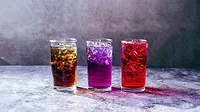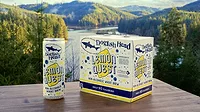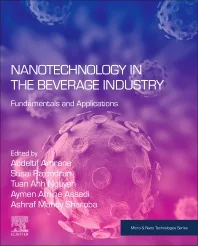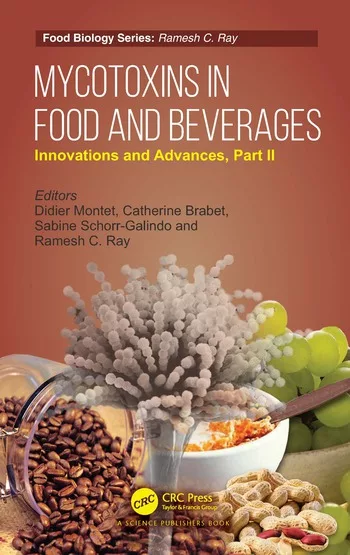Ingredient Spotlight
Hydrocolloids play pivotal role in health-focused beverage formulations
Beverage-makers turn to hydrocolloids to meet clean-label, sugar reduction trends

Image courtesy of Getty Images
By 2019, American fashion model Karlie Kloss had appeared on 40 international Vogue covers. Vogue Paris declared Kloss one of the “top 30 models of the 2000s” when she was 17, and according to Models.com, Kloss “represents the gold standard of modeling — a girl with the look, the poise, and the drive to take things to the next level.” Yet, offering quite a different take, Kloss, when describing what her modeling career encompasses, said: “You are physically up for scrutiny by everyone and you hear everyone’s opinion.”
Although it’s not unusual for people to offer up opinions on just about everything, when it comes to the beverage industry, experts note that with consumers increasingly scrutinizing product labels, this is impacting specific necessary ingredients, such as hydrocolloids, which support key textural components.
“As food ingredients, hydrocolloids must be listed on the ingredient label,” notes Zach Gall, global senior marketing manager, wholesome ingredients and texturants at ADM, Chicago. “At the same time, our research shows that consumers may recognize only some hydrocolloids on product labels, with 44% of U.S. consumers showing familiarity with specifically named hydrocolloids, demonstrating the vast opportunity for the hydrocolloids market to promote their value while beverage product label scrutiny grows.”
Moreover, as today’s consumers are actively seeking out products with shorter ingredient lists — including ingredients they deem to be familiar, and “closer-to-nature,” Gall suggests that beverage-makers should utilize simple and recognizable ingredients while still building exceptional sensory experiences to meet consumers’ growing demands for clean labels.
“[C]ertain hydrocolloids, especially those derived from plant-based sources may support clean-label targets and brands’ product claims like gluten-free, non-GMO, vegan, vegetarian, kosher and/or halal,” he explains. “By using hydrocolloids, stabilizers, gums and emulsifiers derived from plant-based sources, beverage developers can continue to meet consumers’ clean label goals and create delicious beverage offerings.
“For instance, we recently launched our Stabrium Texturants line to offer a creative solution for building consumer-preferred products that don’t compromise final products’ taste or texture,” Gall continues. “This texturant line is composed of plant-based specialty ingredients that include emulsifiers, polyols and hydrocolloid solutions that help control and modify the texture and mouthfeel of food and beverage products.”
Christine Addington, principal technical account manager at Wayzata, Minn.-based Cargill, notes that, with consumers’ strong demand for label-friendly, plant-based ingredients, ingredients like pectin are ideal to incorporate into beverage formulations.
“Long a staple of grandma’s pantry, pectin is recognizable and understandable to consumers. Cargill’s annual IngredienTracker survey, which tracks consumer perceptions for hundreds of ingredients, backs this up,” Addington says. “Among the hydrocolloids included in the survey, pectin consistently earns the highest health perception score. It’s also among the most familiar, with half of all consumers reporting they are very or somewhat familiar with the ingredient.
“Pectin also has a compelling origin story as it is made from the leftovers of juice production — apple pomace and citrus peels,” Addington continues. “Pair these upcycled roots with consumers’ positive perceptions and it’s easy to see why pectin is a go-to solution for many beverage manufacturers.”

Image courtesy of Getty Images
Meeting beverage trends head-on
Although clean label trends continue to impact the beverage industry, another significant trend — sugar reduction — is positively impacting the hydrocolloids market, experts note.
Citing research from ADM Outside Voice, ADM’s Gall points out that eight in 10 U.S. consumers are intentionally avoiding or reducing sugar in their diets and, of those, 83% find sugar reduction important in beverages.
“However, while sugar reduction is a high priority among consumers, reducing or removing sugar in beverages can affect taste and sweetness, as well as viscosity, which can change the overall mouthfeel and texture,” Gall says. “This trend is positively impacting the hydrocolloid sector as hydrocolloids are excellent complementary ingredients to support better mouthfeel in beverage formulations targeting sugar reduction goals.”
Cargill’s Addington echoes similar sentiments, noting that although sugar reduction is top priority for many beverage-makers, successful formulations must do more than replace sugar’s sweet taste.
“Sugar also contributes to a beverage’s mouthfeel. Hydrocolloids can help fill this gap, building back the body and mouthfeel lost when sugar is removed,” she explains. “They’re also a common ingredient for many reduced-sugar dairy and plant-based dairy drinks, where they help with suspension and syneresis prevention.”
In addition to sugar reduction trends influencing beverage formulators, ADM’s Gall notes that with consumers increasingly focused on bringing more protein into their diets — including animal and plant-based proteins — hydrocolloids and emulsifiers can help beverage-makers solve sensory challenges.
“Consumers are looking to their beverage purchases for this added protein optionality, from plant-forward protein shakes to protein waters and alternatives to dairy,” he explains. “While plant-based alternatives to milk, yogurt and shakes continue to gain popularity, beverage formulators must address consumers’ expectations for a sensory experience equivalent to the creaminess and richness found in traditional dairy products to encourage repeat purchases.
“Hydrocolloids and emulsifiers can help brands solve these sensory challenges,” Gall continues. “Specifically, our Stabrium Hydrocolloid solutions deliver a robust, full-bodied texture and syneresis control for dairy and alternative dairy products, such as yogurts and drinkable yogurt. Our Stabrium Hydrocolloid solutions also provide easy dispersion and fast viscosity build-up to bring enhanced mouthfeel and convenient use of powdered beverages to consumers.”
Cargill’s Addington adds that, while hydrocolloids play pivotal roles in many health-focused beverage formulations, hydrocolloids also are key to help protect proteins, contribute mouthfeel and viscosity, assist with suspension and stabilize flavors.
“While [hydrocolloids] don’t provide specific health benefits, their functional attributes make many of the trendy, health-forward drinks possible,” she says. “On the other end of the spectrum, hydrocolloids can also help up the indulgence factor. Carrageenan, for example, is a great match for chocolate beverages, contributing to a rich, creamy mouthfeel.”
Solving sensory challenges
When choosing hydrocolloid solutions, experts note that it’s important for beverage-makers to consider each attribute of the end beverage application, including the desired texture.
Used to help preserve structure and viscosity, hydrocolloids also increase the stability and thickness in certain beverage categories — such as ready-to-drink (RTD) beverages, dairy, alternative dairy and functional beverages, notes Jessica Kidwell, vice president of CD&D Beverage at ADM.
“For instance, when supporting formulations for RTD and powdered beverages, we have solutions that can offer a high level of clarity and/or develop viscosity rapidly, while maintaining the desired mouthfeel and texture of the drink,” she explains.
Cargill’s Addington notes that, as specific solutions and challenges vary based on the type of beverage application, high protein beverages need hydrocolloids that can protect and suspend the proteins throughout the product’s shelf life.
“On the other hand, a reduced-sugar carbonated soda will need hydrocolloids that can build back body and mouthfeel,” Addington explains. “Once we understand the product development framework, we can find the right hydrocolloid solution.
“Sometimes, a single hydrocolloid will fill all the functional roles, but for more complex formulations, we might recommend a combination of hydrocolloids to provide the desired functionality, stability and sensory characteristics,” she continues.
ADM’s Kidwell points to Stabrium Hydrocolloid solutions to bring transparency, stability and functionality in dairy and alternative dairy offerings, helping brands overcome formulation challenges.
“We also offer beverage formulators specialized hydrocolloid blends that can address unique challenges across different beverage applications,” Kidwell says. “ADM experts partner with manufacturers to understand each formulation challenge and provide blended hydrocolloid solutions that overcome these hurdles and meet specific sensory and clean label targets.
“Moreover, when developing highly sought-after functional beverage options low in sugar or high in protein or fiber, we leverage our entire library of ingredients and systems to bring together the best combination of complementary solutions,” she continues. “For example, we pair our clean-tasting and neutral-colored plant proteins with our hydrocolloids to support protein targets and lessen the impact on taste and appearance, while also adding nutritional value and ingredient diversity.”
Cargill’s Addington notes that, as a label-friendly hydrocolloid, pectin fills critical functional roles, protecting proteins in acidified yogurt drinks and providing body and mouthfeel in reduced-sugar beverages.
“In low-pH high-protein beverages, pectin prevents the proteins from sticking together, forming large clumps and creating a gritty, unappealing texture,” she explains. “We’re also seeing it used, in some applications, as a label-friendly alternative to modified food starch.”
Further, when it comes to neutral pH situations, such as chocolate milk, Addington points to carrageen as an ideal ingredient.
“The texturizing ingredient helps maintain particle suspension, provides a decadent mouthfeel and prevents syneresis, a critical role in high protein milks, which are prone to forming a white film layer on top,” she says. “You’ll also see carrageenan use in many neutral pH dairy-alternative beverages. Here it helps stabilize proteins and provides properties such as thickness, viscosity and a creamier mouthfeel. It also helps ingredients like cocoa particles remain in suspension during processing and over shelf life.”
Suited for a wide range of beverages
As hydrocolloids can play a supporting role in a wide range of beverages, bringing trends from health-focused to indulgence to life, experts note that these ingredients are essential in most any beverage formulation.
“Thanks to their functionality and versatility, they are core ingredients in most any beverage recipe, enabling everything from immune-supportive beverages to the next-generation of dairy-alternative drinks,” Cargill's Addington says. “Fibers, including our new soluble corn fiber, are also finding application in this space.
“Although not technically a hydrocolloid, fibers can fill similar roles, providing mouthfeel and texture while also potentially offering health benefits,” she continues.
ADM’s Kidwell echoes similar sentiments, noting that by incorporating fiber solutions, beverage-makers can further meet functional beverage trends.
“Bringing in solutions like ADM/Matsutani LLC’s Fibersol is also fantastic for reducing overall sugar content and adding on-trend dietary fiber, without sacrificing key sensory aspects,” she says. “Specifically, Fibersol helps build back integrity through structural and binding qualities that can be lost when reducing sugar.”
Cargill’s Addington notes that because hydrocolloids are so central to trendy beverage formulation, in 2021, Cargill opened a cutting-edge pectin production facility in Brazil’s citrus-growing region.
“It produces the full range of Cargill’s high methoxy (HM) pectins, the type most often used in beverage formulation, bringing expanded production capacity to the marketplace,” she says. “The facility not only significantly increased our pectin supply; it also spread our production across two continents.”
Looking for a reprint of this article?
From high-res PDFs to custom plaques, order your copy today!









